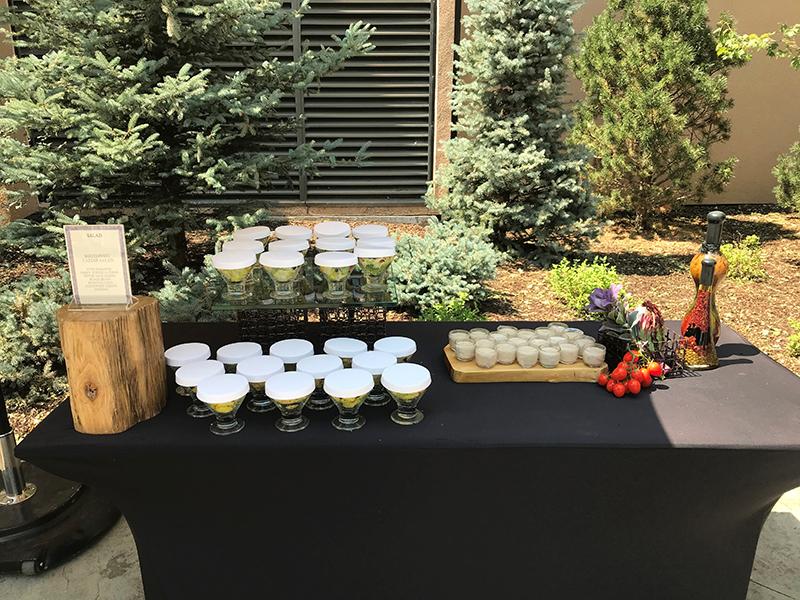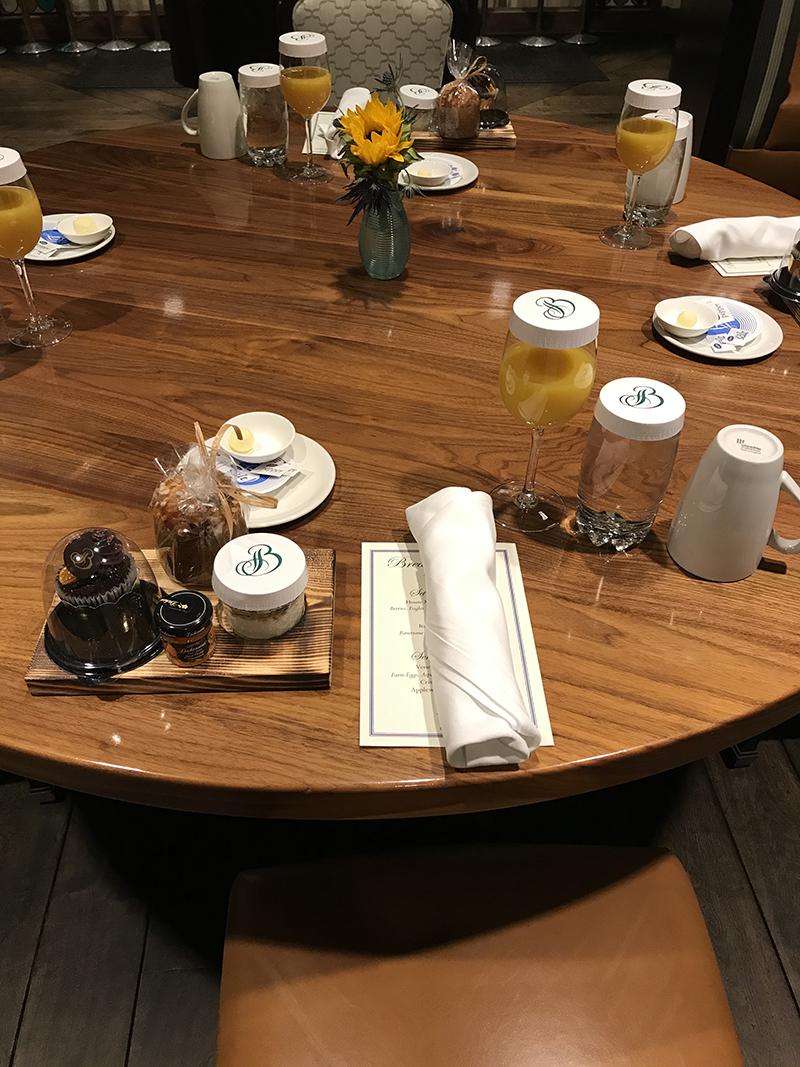The coronavirus pandemic has shattered every norm in the meeting industry, including the food and beverage part of events. Some adjustments that have become accepted norms at meal functions—like social distancing and reduced capacities—could fall by the wayside in a post-pandemic world, but changes in how food is served, what’s offered and even the planning of food are poised to be permanent fixtures of how group business is done.
“Overall, the pandemic has pushed us to rethink and reimagine how we provide our guests with the services and experiences they are looking for,” said Adam Crocini, global head and vice president, food and beverage brands, Hilton Hotels Corp.
That starts with changes to buffets, which often are now served at single-sided tables and feature individually packaged items instead of shared dishes, more action stations and the presence of servers instead of self-service setups.
To stay safe, many items are served in enclosed vessels, such as salads in sealed jars, wrapped sandwiches, and meals in bento boxes. Hilton has even set up sanitation stations at buffets, with hand sanitizer and gloves for those wishing to use them, while at Marriott International, there’s been an uptick in the “use of non-traditional event spaces, such as outdoor venues,” said Petr Raba, vice president, meetings and events, global operations.

Innovations that likely will be permanent fixtures of meetings and events have been made on the beverage side of group business too. Marriott has created bars that serve batched cocktails, said Raba, “such as a Negroni for 50 people.” These drinks can feature “custom packaging like flip-top bottles, cans and sustainable pouches.” At Hilton, said Crocini, “Experiences such as virtual wine tastings may fade, but new products—such as to-go cocktail pouches and grab-and-go meal sets—are expected to have a place in the hotel experience.”
But new ways of doing business don’t come without making some adjustments.
“Single-sided buffets take longer,” noted meeting planner and food guru Tracy Stuckrath, founder and chief food officer at Thrive! Meetings and Events. “More staff is going to be needed.”
Another solution is to adjust event schedules to accommodate the time increase, noted Raba. “We can extend the time for food and beverage events to support social distancing, or multiple meal venues.”
Added Crocini: “When incorporating this type of approach, the planner would work with their hotel team to ensure the set-up enabled a steady flow of traffic to [food] stations.”
Fringe Benefits
On the plus side, the changes have allowed both planners and attendees to reap unexpected benefits.
“Single-sided buffets or stations allow us to make each interaction more personable,” declared Raba. “With items often prepared a la minute and served by a chef or attendant, we can ensure the highest quality. Individual servings and more action stations give us the opportunity to personalize and customize to guest preferences.”
Opined Crocini: “In the past year, many people have had more time to focus on their health. Because of that, post-pandemic, I anticipate more guests and planners will look for menus consisting of fresh, organic and locally farmed and sourced products.”

A big bonus also is baked into another new way of doing business—the paring back of endless banquet options.
At The Broadmoor, a 784-room hotel that primarily does meetings and event business, the banquet menu has been cut from 30 items to 16, and the kitchen is cooking larger portions of each item since more groups will use it, cutting down on labor. As a result, the Colorado Springs, CO property has been able to keep group breakfast pricing flat with last year’s rates and has actually lowered the cost of group lunches, and some dinners.
“We’re asking guests to choose one menu and we’re making it at volume, which lowers our costs, and we’re supplying attendants without having to charge extra, so it’s a win win,” said Pierre Stone, director of conferences and catering. “We can’t do events now like we’ve always done them.”
Strategic Planning
“A lot of hotels are streamlining their menus because they have fewer staff to prep and they serve large quantity of foods,” explained Stuckrath. She added, however, that the pandemic cast a spotlight on a needed change to the way in which meeting planners order food.
“We need to be more aware of who’s coming to a meal function, because of physical distancing, and order based on what everyone likes to eat,” she said. “Planners must look at how to design events based on what attendees want, versus what we think they want.”
Hotels have a role to play too, Crocini said. “It’s always been crucial to partner with each customer to achieve their event objectives—whether on menus or something else. This will be even more important as groups begin to meet again.”
Related Stories
Hilton Now Offers COVID-19 Testing, Health Screening Resources for Event Attendees
Small Meetings Are On the Rise at The Broadmoor
Marriott International Partners With Providers on New Hybrid Meeting Solutions
Gaylord National Resort & Convention Center Reopening July 1